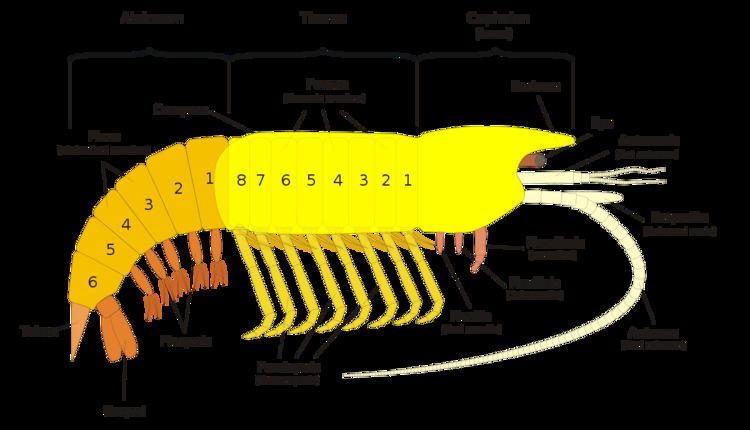 | ||
The cephalothorax, also called prosoma in some groups, is a tagma of various arthropods, comprising the head and the thorax fused together, as distinct from the abdomen behind. (The terms prosoma and opisthosoma are equivalent to cephalothorax and abdomen in some groups.) The word cephalothorax is derived from the Greek words for head (κεφαλή, kephalé) and thorax (θώραξ, thórax). This fusion of the head and thorax is seen in chelicerates and crustaceans; in other groups, such as the Hexapoda (including insects), the head remains free of the thorax. In horseshoe crabs and many crustaceans, a hard shell called the carapace covers the cephalothorax.
Contents
Fovea
The fovea is the centre of the cephalothorax and is located behind the head (only in spiders). It is often important in identification. It can be transverse or procurved and can, in some tarantulas (e.g. Ceratogyrus darlingi) have a "horn".
Clypeus
The clypeus is the space between the anterior of the cephalothorax and the ocularium. It is found in most arachnids.
Ocularium
The ocularium is a "turret" for the ocelli found in most arachnids. In harvestmen, it may have the ornament of spines.
Trident
The trident is a small group of (usually three) spines found in harvestmen exclusively. It is located in front of the ocularium. It varies in size amongst species; in some it is completely absent, and in others it is enlarged considerably.
